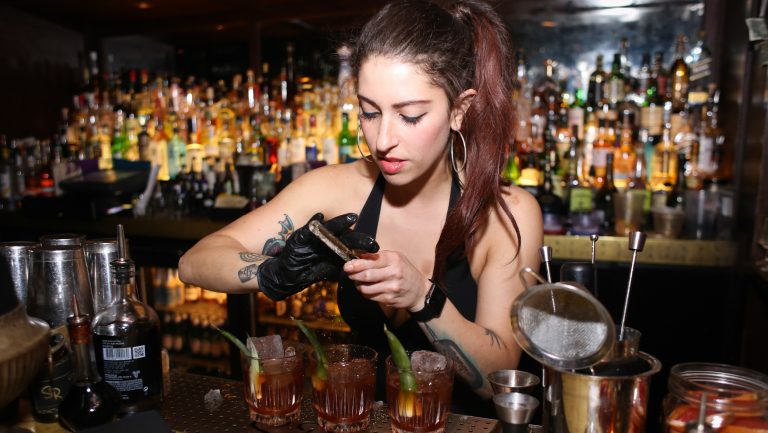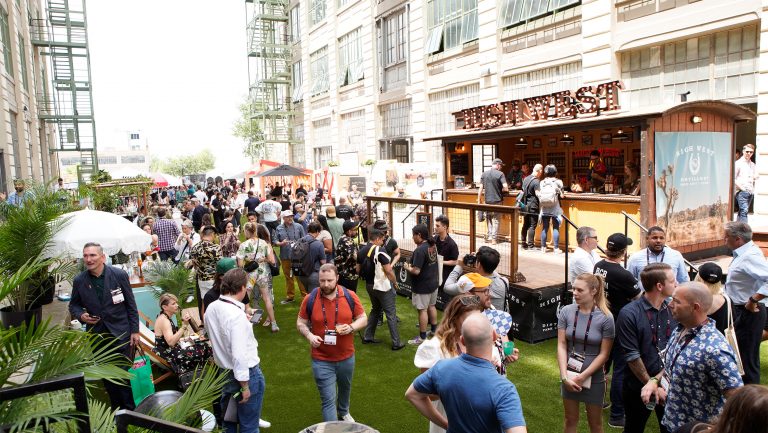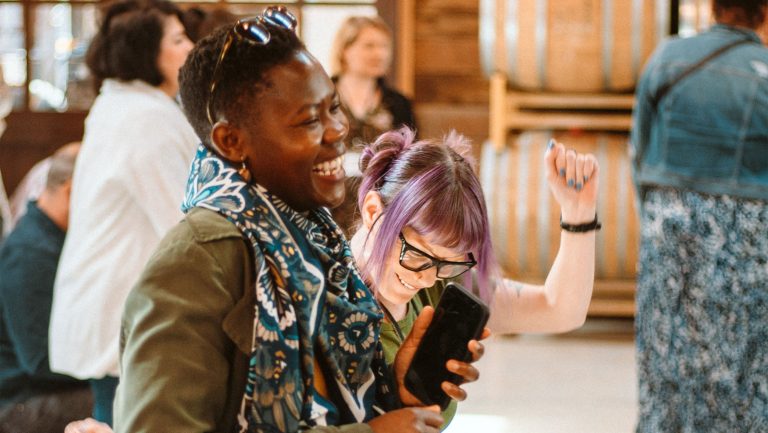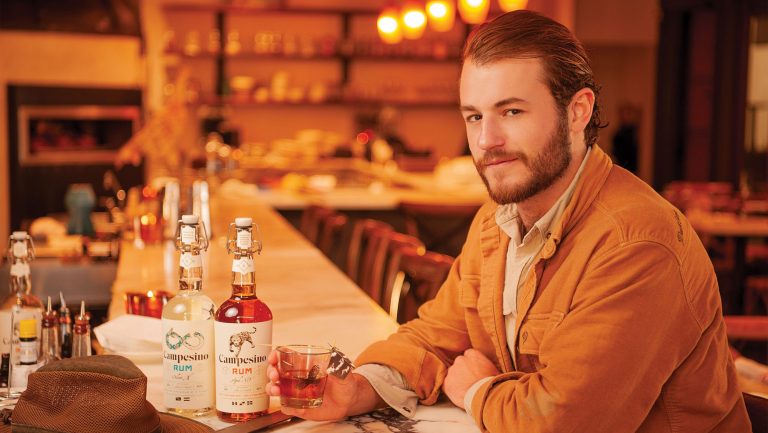Guest bartending gigs and pop-ups can be powerful marketing tools for bartenders and brands alike. At Tales of the Cocktail 2018, Adrian Biggs, the director of trade engagement at Bacardi, moderated a panel of experts—lead bartender Jose Luis León of Mexico City’s Limantour, beverage director Micah Melton of The Aviary (Chicago and New York City), beverage director Jillian Vose of New York City’s The Dead Rabbit, and bar director Yael Vengroff of the Hollywood Roosevelt’s Spare Room in Los Angeles—who discussed how other pros can replicate the successes, as well as learn from the missteps, of their collective 200-plus guest bartending appearances.
Origins and Benefits
Biggs started the panel discussion by tracing the origins of guest bartending shifts and informal pop-ups back to the early aughts and to global brand ambassadors like Jacob Briars and Angus Winchester, who would travel on behalf of Bacardi and Tanqueray, respectively, and take shifts at various bars to showcase their spirits along with new recipes and techniques. In return, the hosting bar could use the guest bartending event to drive traffic and revenue, creating a win-win for host and guest.
For León, taking guest gigs is a way to learn new skills and to promote both his bar and himself. “In Mexico,” he explains, “I’m fairly isolated. All the cocktail books are in English and are really expensive. It’s hard to learn new things.” He adds that in the last year alone, he worked nearly 70 guest stints in 30 countries and 45 cities across the globe. He’s returned the favor, hosting more than 60 guest bartenders at Limantour over the past several years.

Don’t miss the latest drinks industry news and insights. Sign up for our award-winning newsletters and get insider intel, resources, and trends delivered to your inbox every week.
The Dead Rabbit’s Vose and other team members from the bar have traveled extensively for guest bartending engagements and pop-up events. They’ve been featured at Claridge’s in London, The Clumsies in Athens, and Only YOU Hotel Atocha in Madrid, among others. Pop-ups, says Vose, provide an opportunity for staff to learn new skills in new places, and for people in other cities who may never get to the original location to experience the bar in person. “But don’t just go to the dive bar down the street,” she says. “You need to do something interesting and unique.” That’s why Dead Rabbit, during its Claridge’s residency, was so meticulous about replicating the original Dead Rabbit space—right down to staff uniforms, photos on the wall, and sawdust on the floor.
Planning Guest Bartending and Pop-up Events
“People expect a certain level of smoke and mirrors from us,” says Melton, “so when we travel it’s a huge undertaking. We’ve had some nightmare experiences because we didn’t ask the right questions. For example, when we were in Madrid, we realized there were no coffee filters. Now I think about every small detail.” He recommends shipping specialty items like liquid nitrogen and glassware ahead of time and making sure that the host bar has adequate space for prepping and storing equipment.
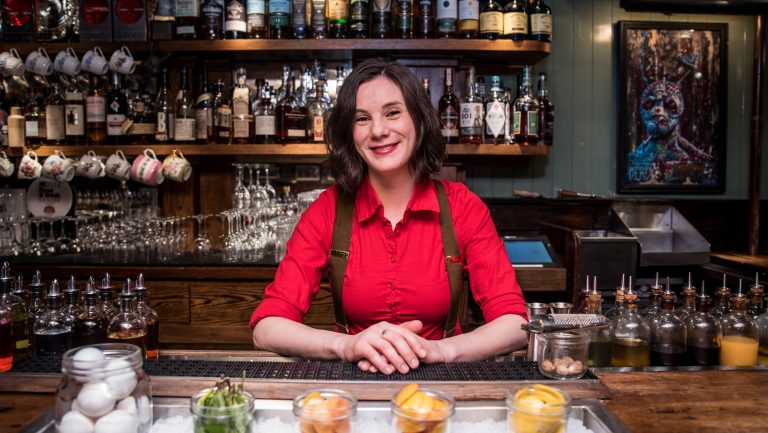
Vose says that planning for the Dead Rabbit pop-up at Claridge’s took seven months and included two days of extensive training and mock service for the host bar staff. She recommends building in a buffer of time before the start of international pop-ups and residencies, including “a day to recover [from travel], a day for media, and a day to prep, plus having a clear understanding of your itinerary before your trip so you don’t end up working five bars in one night.”
Vengroff suggests that host bars like her Spare Room, which hosts a tiki evening once a month, on a Wednesday, from May through September, set guests up for success by ensuring that there’s someone in house who’s familiar with POS and other systems to help ring up tickets and in case problems arise midservice. She also keeps the drinks menu simple, charging $15 for cocktails and $6 for beer.
“Customers have to order special cocktails directly from the guest at the bar,” Vengroff says, “which encourages interaction and keeps service smooth for our servers and customers alike.”
Managing the Budget
León advises complete transparency with brand sponsors and host bars about your budget. “You need to pay for flights, accommodations, and expenses,” he says. “You need to make money. They need to make money. Be realistic up front about what investment that takes.”
Vengroff, who’s a big fan of costumes and elaborate marketing campaigns to promote guest bartending events, says that the right investment can “really transform a space, give the guest [bartender] the best experience possible, and help drive revenue,” all of which benefits both parties.
Vose says that it’s best to work with brands you genuinely like and support, while Biggs warns against wasting “time and dollars” on products you’re not willing to put on your backbar. At the same time, he says, “don’t be scared to ask for money and product. Ask for stirrers, napkins, bar runners, and the like. Brands like ours have money to spend on those things and are happy to provide them.”
Vengroff, who once hosted an event with a Wild Turkey ice sculpture luge that showcased the brand and gave customers a picture-perfect opportunity, says that while promotional photos don’t need to be overly elaborate, they are important for documenting your value to investors.
According to Biggs, guest bartending gigs have been and will continue to be important to brands like his because they are “getting liquid to lips.” He adds, “If you’re pouring my brands, getting people to sample them, and taking photos—that’s marketing gold.”

Dispatch
Sign up for our award-winning newsletter
Don’t miss the latest drinks industry news and insights—delivered to your inbox every week.
Laura Scholz, a writer and editor based in Atlanta, has covered food, spirits, wellness, and travel for the Atlanta-Journal Constitution, the Atlantan, Eater Atlanta, Liquor.com, Tales of the Cocktail, VinePair, and other publications. She is currently the fitness editor of Atlanta magazine. Follow her on Instagram @lbscholz.


